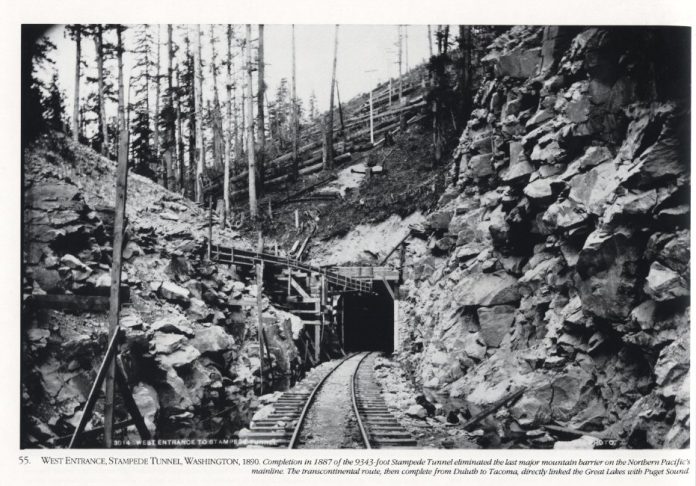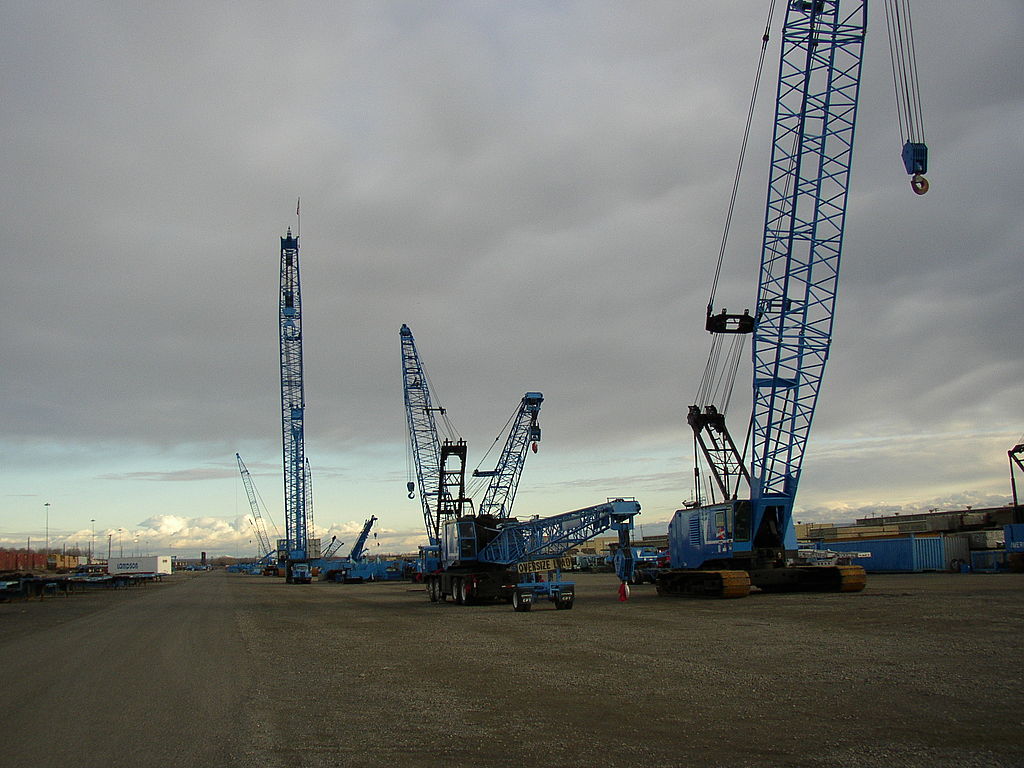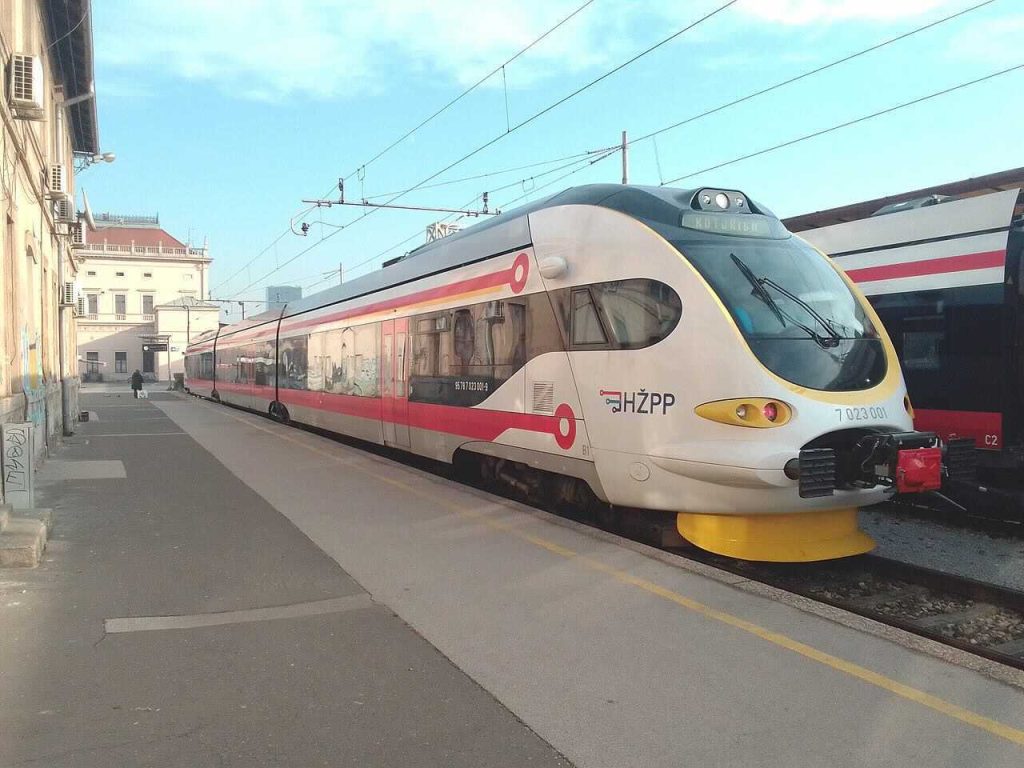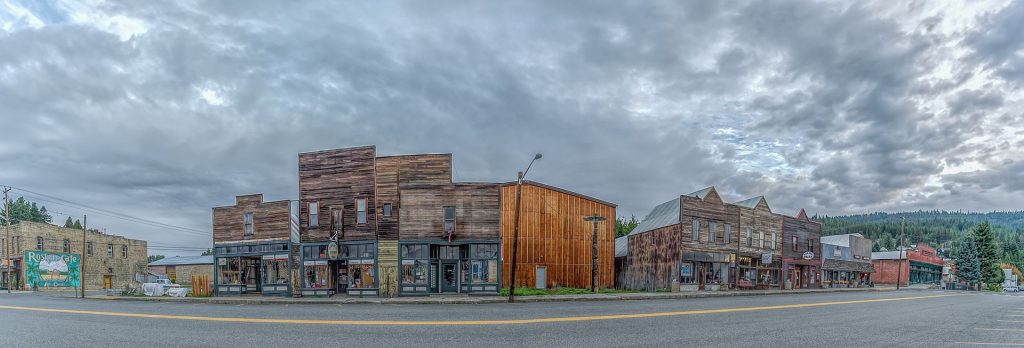In previous coverage, we discussed the possibilities for local rail across the state, but also mentioned the problems with getting Stampede Pass ready for passenger rail. Recently, the state has discussed a minor expansion to I-90 through the mountains and a major, $30.8 million widening of SR-516 in the Covington/Maple Valley area. As discussed before, road widening rarely provides much in the way of congestion relief and is very likely to increase greenhouse gas emissions. Going forward, we should avoid doing additional road expansions like this and instead invest in increasing rail capacity in places such as Stampede Pass. Such rail capacity improvements would provide far greater value than road expansions into the passes and mountain valleys.
The Stampede Pass rail corridor was originally built in 1888 as the Northern Pacific Railway’s route through the Cascade Mountains, making Tacoma the terminus of a transcontinental railroad and briefly a boomtown before Seattle got its own rail line and regained its advantage. In modern times, railroad routes through the rugged Cascade Mountains have become a rare commodity. The two primary routes are the two forks of the Empire Builder. The northern Seattle route connects Everett to Spokane through the Cascade Tunnel under Stevens Pass. The southern route tracks the Columbia River through the gorge to Portland. As the busiest east-west line in the region with 34 freight runs and two Amtrak passenger runs as of 2016, the Columbia line is already beset with congestion and delay issues. The Washington rated it an “E” just shy of an “F” rating in Level of Service. The northern route is rated a “C” at lighter traffic of 16 freight runs and two passenger runs per day on average. Our freight capacity is running up against constraints that need to be addressed.
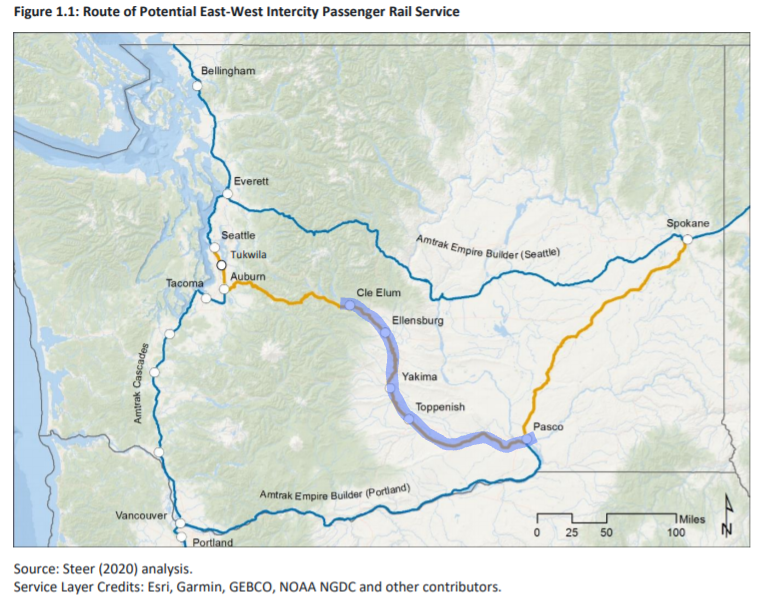
Opening up the old Northern Pacific route to significant traffic again would take some of the strain off the two Empire Builder forks. The new passenger rail corridor would also pull trips out of cars. The Northern Pacific route offers a superior connection to Seattle for a few key inland population centers. A quarter million people live in Yakima County and another quarter million live in the Tri-Cities (Pasco, Kennewick, and Richland) — that tri-headed metro area grew by more than 20% since 2010. It also goes through the heart of wine country and rich agricultural land that sees tons of seasonal farm workers.
Stampede Pass is now owned by BNSF Railway. As it is mostly single-tracked, has short tunnel clearances, non-signaled, and with steep grades, the corridor is used mainly for transporting empty rail cars in a single direction. All of these conditions along with its average speed of 26 miles per hour make it completely unsuitable for passenger travel and limit its use for freight. However, relatively inexpensive fixes could greatly boost the capacity and lower the steep climbing grades. The state should not just hand over these upgrades to a private company for free though. These upgrades should be viewed as an investment in the Stampede Pass route where either partial ownership (similar to Sound Transit’s arrangement with the Point Defiance Bypass) or permanent capacity easements (similar to the arrangement for Sounder service) should be negotiated for the significant investment incurred in the corridor.
Affordable Investments
Compared to tens of billions the state regularly spends on road projects, studies have repeatedly brought up relatively affordable projects that could greatly increase the usability of Stampede Pass. In a 2006 report, two options were presented:
- Alternative A – East-West Capacity Expansion Project – Assumes a $350 million investment, shared between the State and the railroads, for selective capacity improvements. This will add capacity for approximately 25 percent more capacity December 2006 Statewide Rail Capacity and System Needs Study Task 10.2 – Washington State Rail Investment Plan 23 (from 100 to 108 trains per day to 124 to 132 trains per day). (Note that these train volumes include the UPRR’s Columbia River route capacity.)
- Alternative B – East-West High Velocity Rail Corridor Project – Assumes a $1.5 billion to $2.0 billion investment, shared between the State and the railroads, for comprehensive capacity improvements. This will increase the east-west capacity by approximately 60 to 70 trains per day and lower operating costs.
While these are 2006 prices and some of these ideas have already been implemented — specifically added capacity along the Columbia River — it’s important to point out that Stampede Pass improvements have not occurred and the potential to add 60 or more trains per day is a lot of capacity for a relatively low cost that could be put to many uses. In Alternative B, there would be a new four-mile tunnel that would reduce grades from 2.2 to 1.6 for the route. Additionally, the 2020 East-West Passenger Rail study identified roughly $75 million in infrastructure cost to make bi-directional travel possible along the line which is quite a low price for work on such a long corridor. To make the most of this corridor, more expensive upgrades might be needed (full double-tracking, additional straightening and/or smaller tunnels closer to Maple Valley, electrification), but given the price points identified in the past, the costs may be well less than a full new rail line and are worth studying in conjunction with buying permanent access to some percentage of the throughput.
Here’s how this capacity could be put to use to relieve cross mountain traffic needs:
Maple Valley Rail
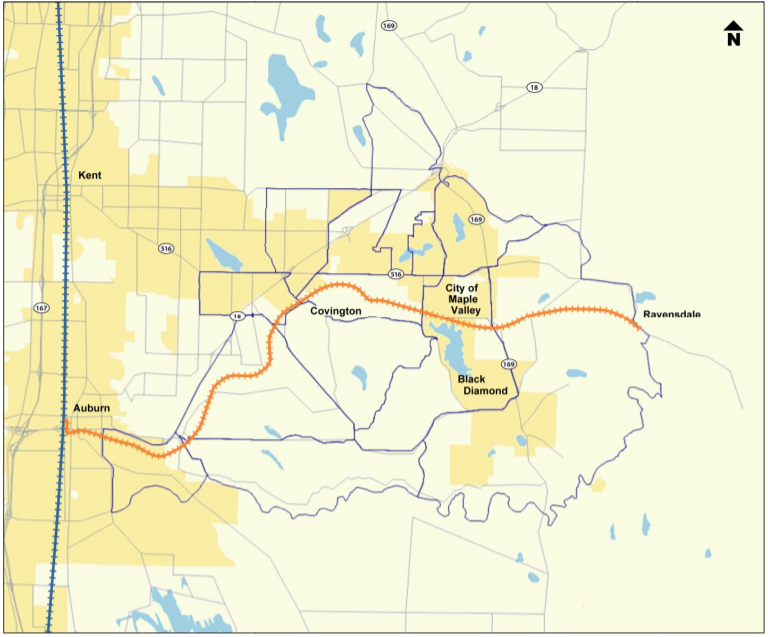
Whether or not we urbanists think it’s a good idea, population is growing in former rural places in the Maple Valley. With that growth has also come an increasing demand to expand the roadways through the region to meet their transportation demands. However, expanding roads is not actually likely to produce much congestion relief in the long-term and is also antithetical to our climate goals of reducing auto travel. Fortunately, the Stampede Pass rail line runs through Covington. Restored service there could provide improved transit and other access to folks through the valley to places like Auburn. Perhaps this would take a little more stress off the roads than simply widening them. There is at least some interest in this idea as it has been studied recently.
Ideally, the state would simultaneously electrify this rail instead of using diesel multiple units (DMUs) to further reduce fossil fuel dependence, but even a starter line with DMUs could be upgraded to electric service later. Establishing rail service here might also provide a good excuse to continue investing in the corridor, synergizing with other project ideas listed in this article. Over the long-term, a fully restored passenger and freight rail corridor over the mountains could provide a lot more opportunities for the future for the Maple Valley area than just a few more lanes that highway could provide.
| Population Center | 2010 | 2020 |
| Covington | 17,575 | 21,283 |
| Maple Valley | 22,684 | 27,542 |
| Black Diamond | 4,151 | 5,467 |
| Ravensdale | 1,101 | 1,873 |
The Inland Port
The biggest new use for a high-capacity track through Stampede Pass would be freight operations and converting diesel trucks currently on the other passes into rail freight cars over this pass. Much of the freight traveling over the mountains locally still relies on trucks driving produce and other goods over the mountains to reach the ports in Seattle and Tacoma. Traffic congestion and other backups at getting to the ports creates problems for farmers trying to get their products to market.
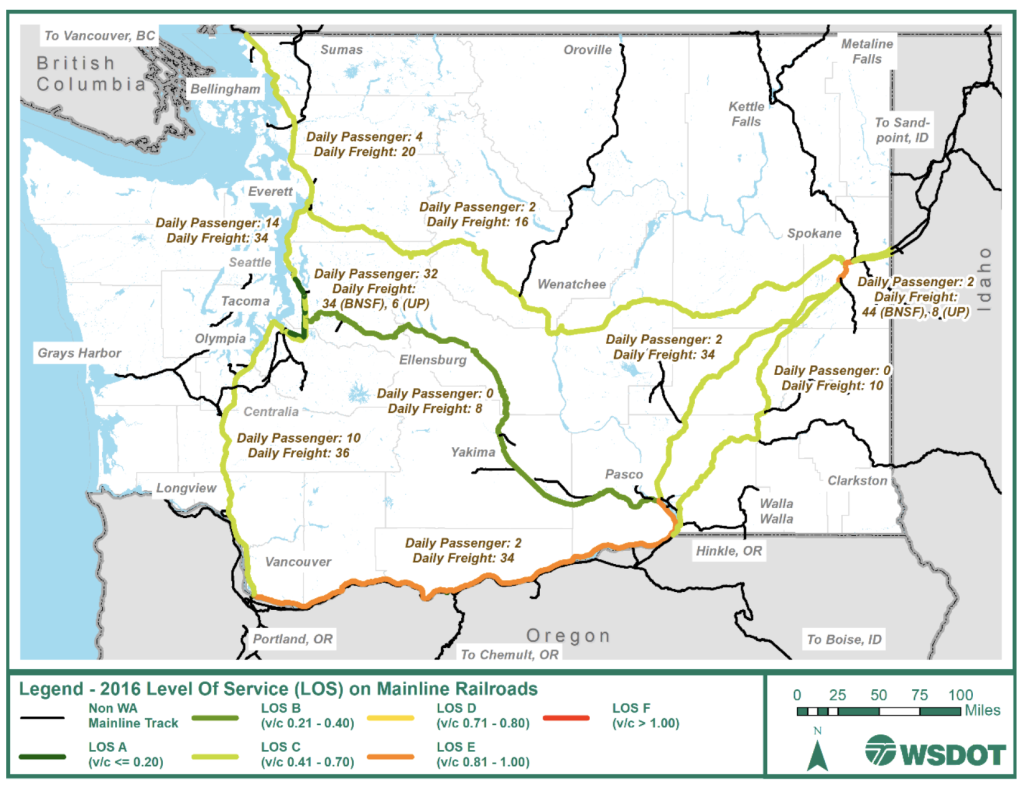
To address this, The Northwest Seaport Alliance are currently working on developing an inland port to put more products on rail cars on the east side of the mountains rather than sending them west via truck. Since this inland port is likely to be located near the Tri-Cities, a high-capacity rail route through Stampede Pass would easily be something in their interest to bring into being. If we play our cards right and electrify as well, we could make a good portion of all freight going over the mountains carbon neutral well before 2040. Even before electrification, in the near-term boosted rail could significantly reduce emissions of freight across the mountains.
Passenger Rail
When enough upgrades have been implemented between Auburn and Cle Elum, passenger rail between Seattle and Pasco will be much more viable. If the current estimate for traversing the pass of nearly three hours could be brought down closer to one hour, a cross-mountain Amtrak or other passenger service will be a lot more competitive. As I covered in a previous article, rail may already be a viable travel option from Cle Elum to Pasco, so a better mountain pass option is primarily what we need to make this an attractive service to riders.
Mountain Tourism
Speaking of Cle Elum, transit accessible tourism might also be a draw to travel across the mountain passes. Any passenger service along Stampede Pass would likely be a big boost to the tourism economy of Cle Elum and nearby Roslyn. Both have preserved historical structures from their mining history and might present additional transit-oriented travel destinations Washington could offer for folks coming to town without a car. Of course, nearby Snoqualmie pass would likely draw a much larger crowd of seasonal transit users, but currently there are no studies yet available on the viability of restoring rail to the Snoqualmie tunnel.
A Mountain Ferry Ride
Rail shuttle services which carry vehicles in single- and double-stacked arrangements, are not uncommon in Europe where there are even multiple examples of these being used in mountain passes. When capacity is constrained due to traffic or other passes being closed, a frequent rail connection could prove a useful alternative to current pass conditions. Additionally, this could be designed to carry passengers as well as cars to provide a transit connection in the interim before a full passenger only rail service crossing Stampede Pass becomes viable on its own. This idea is a bit unconventional, and could have a lot of potential uses, so I plan to cover it in its own article soon.
Electrification
Though freight rail tends to be much less carbon intensive than the truck-based counterpart, as electrification proceeds, the future is a little less clear. What is clear though is that increased freight truck traffic increases wear and crowding on shared infrastructure, so it will continue to be beneficial to shift long-distance freight to rail. With net zero carbon as our goal, we should begin to electrify rail routes wherever possible. It’s clear though that freight rail operators are reluctant to take on the costs of electrification, however, if the state were to take over most of the use of a corridor, investing in electrification could make a lot of sense. This is particularly true on uphill mountainous routes where diesel emissions would likely climb and battery powered trains might struggle. Particularly in the case where the traffic could be largely between an inland port and the ports of Tacoma and Seattle, electrifying the entire route could make a lot of sense.
Other Passes and Chokepoints
Beyond Stampede Pass, it may also make sense to investigate increasing capacity used on other rail lines in the future. Stevens Pass (Highway 2) is severely limited by the capacity of the Cascade Tunnel. This route was originally electrified and was not nearly so limited in capacity. The studies we have referenced here note that upgrades to that tunnel along with additional sidings could greatly increase capacity. That capacity could be potentially further increased through electrification if it could be done so without impeding current freight movements. Of the uses listed above, boosted passenger rail use (current Empire Builder route), improved tourism, and freight usage would be the most likely benefits.
Instead of an Auburn-to-Cle Elum connection, reactivating the former rail route through Snoqualmie Pass would connect Renton to Cle Elum. This route may have higher potential for tourism use. Being fully publicly-owned, the state would have more power to directly determine its usage, but it could also be much more costly, as the whole route is without rail right now. Rail development on the pass could face political resistance, as it is currently used as the right-of-way for a number of popular trails and traverses many more currently populated areas than Stampede Pass does. There is no recent study on re-activating the Snoqualmie route so there are no estimates currently available that we can cite for comparison. These passes each have a different set of potential benefits and drawbacks and may be worth researching for future needs.
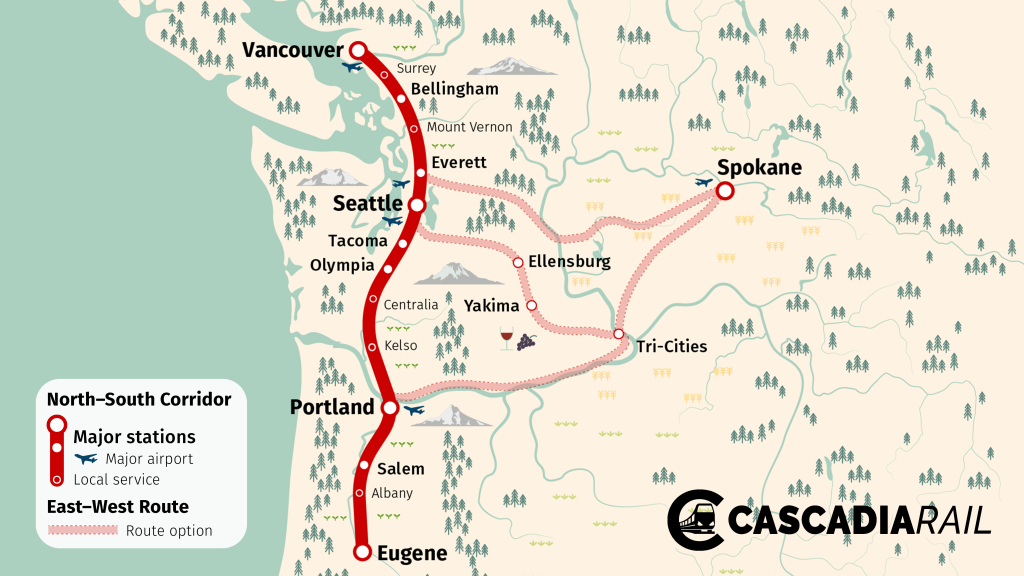
In the north-south direction, Cascadia high-speed rail offers a unique way to solve congestion woes in the I-5 corridor at a lower cost than freeway widening while also driving down climate pollution and speeding up travel times. As the Washington and Oregon state legislatures weigh a $5 billion plan to supercharge I-5 across the Columbia River, we should certainly be seeking more environmentally sound alternatives and demanding a long-term vision and plan.
In Summary
Given how underutilized the Stampede Pass currently is, it could easily be invested in to better serve the needs of Washington state. Growth in freight needs for Eastern Washington is bringing inland ports into being, which could use a more direct route to the sea ports. Cross-mountain rail shuttles could provide additional capacity for getting across the mountains when the other passes are too crowded or closed due to severe weather events. Better connections to mountain towns could encourage more auto-free tourism and connect overseas visitors who are not prepared to drive. In Maple Valley, the potential exists to move some freight and movement of people to rail, avoiding future road expansion as communities continue to grow.
If the state takes the initiative to help decide the future of the Stampede Pass rail line, they could also choose to electrify it as an initial test case of fully electrified cross-state freight and passenger services. This could reduce emissions much faster than waiting for entire auto fleets to be replaced with electric ones. Some of these ideas may not be enough on their own to justify a remaking of Stampede Pass, but overlapping needs like this could make a rebuilt rail corridor a good idea for Washington state’s economy and carbon-free future.

Charles Bond
Charles is an avid cyclist that uses his bike as his primary mode of transportation. He grew up in the Puget Sound, but is currently overseas living in Japan. He covers a range of topics like cycling, transit, and land use. His time in Tokyo really opened his eyes to what urbanism offers people and has a strong desire to see growth happen in Seattle.

